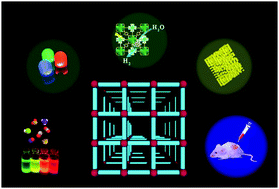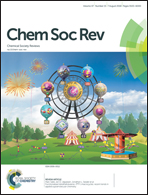Photonic functional metal–organic frameworks
Abstract
Metal–organic frameworks (MOFs) have emerged as particularly exciting inorganic–organic hybrid porous materials which can be simply self-assembled from their corresponding inorganic metal ions/clusters with organic linkers. MOFs can combine the inherent physical and chemical properties of both inorganic and organic photonic units due to their inorganic–organic hybrid nature. Furthermore, the pores within MOFs can also be utilized to encapsulate a large number of guest species as photonic units. The vast combination possibilities, synergistic effects, as well as controllable and ordered arrangements of multiple photonic units (MPUs) have distinguished MOFs from other inorganic and organic photonic materials and enabled them to be a promising platform to realize novel photonic functional applications. In this review, we summarize the recent and important progress in the design and construction of photonic MOFs, as well as their various applications in luminescence sensing, white-light emission, photocatalysis, nonlinear optics, lasing devices, data storage, and biomedicine. In addition, we highlight the construction strategy and the synergistic effects of MOFs towards achieving high performance and novel photonic functions. Finally, we also outline the challenges in these fields and put forward the prospects and directions for future development.



 Please wait while we load your content...
Please wait while we load your content...